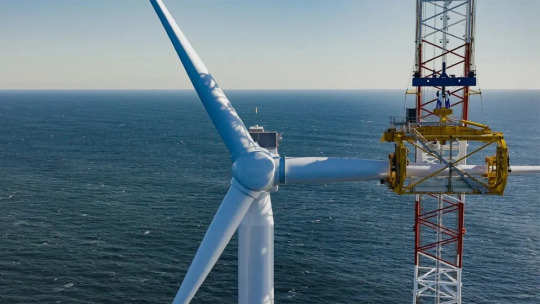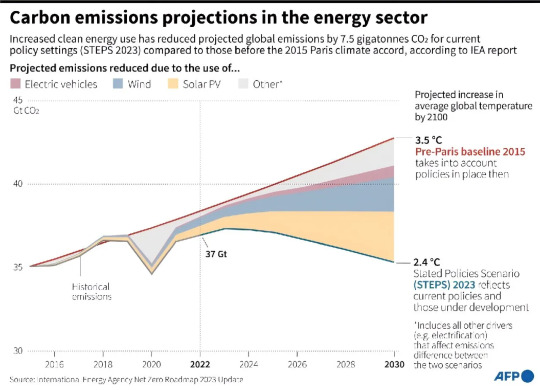#global climate indicators
Explore tagged Tumblr posts
Text
10 Signs of Climate Change Happening Right Now
Climate change is no longer a distant threat; it is a present reality, reshaping our planet in profound and undeniable ways. While scientific models and long-term data sets provide the overarching picture, many of the changes are visible right now, impacting ecosystems, economies, and human lives across the globe. These aren’t just abstract concepts; they are observable phenomena that serve as…
#albedo effect#Arctic sea ice decline#biodiversity impact#Carbon cycle#carbon dioxide#climate change#climate change awareness#climate change data#climate change evidence#climate change facts#climate change solutions#climate crisis explained#climate feedback loops#climate impacts#climate science#climate system#coastal flooding#coral bleaching#drought#ecological shifts#effects of climate change#environmental changes#environmental crisis#environmental monitoring#environmental science#extreme weather events#future climate predictions#global climate indicators#global environmental issues#global warming
0 notes
Text
#30x30#agriculture#biodiversity#biodiversity loss#biodiversity net gain#butterflies#candice gaukel andrews#climate change#conservation#cotswolds#england#environment#europe#global warming#grassland butterfly indicator#natural habitat adventures#nathab#nature#nature restoration law#rewilding#science#science and environment#scientific research#scotland#wild#wildlife#world wildlife fund#wwf
2 notes
·
View notes
Text
"China’s carbon emissions have flatlined over the past six months and there’s now an opportunity for substantial declines over the next decade, analysts say.
The rapid growth in clean energy generation has been sufficient to offset a recent surge in power demand caused by higher air conditioning use amid late-summer heatwaves, and the government’s manufacturing push, according to an analysis by Lauri Myllyvirta of the Centre for Research on Energy and Clean Air (CREA).
China’s carbon emissions fell by 1% in the second quarter of 2024 and were flat in the third quarter, providing another indication that emissions may have already peaked.
This is largely because solar power output was up 44% in the three months to end-September, compared to a year before, while wind power generation grew 24%. In the first nine months of 2024, China installed 161GW of new solar capacity and 39GW of wind, per CREA data.
For emissions to post a decline in 2024 as a whole, there will need to be a 2% reduction in the fourth quarter, Myllyvirta’s calculations show. That’s probable if power demand growth cools as expected and hydro plants perform in line with historical averages, he wrote in a post on X, adding that over the entire summer period, clean energy expansion covered all electricity demand growth.
“If the current downturn in China’s emissions is sustained — with emissions falling in the second quarter and stable in the third quarter — that would open the door to the country beginning to reduce emissions much faster than its current commitments require.
“This would have enormous significance for the global effort to avoid catastrophic climate change, as China’s emissions growth has been the dominant factor pushing global emissions up for the past eight years since the signing of the Paris climate agreement.”
Based on current trends and targets, CREA expects China’s emissions will decline 30% by 2035. The International Energy Agency says emissions will fall 24% by then based only on stated policies, but that could be raised to 45% if the country follows a pathway that’s consistent with its long-term carbon neutrality target.
For the time being, Chinese policymakers are setting relatively unambitious targets, and “it’s vital that future targets reflect ongoing clean energy trends to avoid locking in lower ambitions,” Myllyvirta said."
-via The Progress Playbook, October 29, 2024
#china#solar power#wind power#renewables#carbon emissions#fossil fuels#asia#climate change#climate action#climate news#good news#hope
5K notes
·
View notes
Text
In January 2019, world-renowned food and nutrition experts published a groundbreaking study. The culmination of two years’ work by 37 authors, the EAT-Lancet report set out to answer the question: how can we feed the world’s growing population without causing catastrophic climate breakdown? The publication was high profile. Launched in the prestigious peer-reviewed Lancet medical journal, the report came out in 12 languages, and a flagship event at the World Health Organisation (WHO) in Geneva, Switzerland was planned for March. But in the days leading up to the launch, the WHO pulled out. The health agency’s withdrawal followed a massive online backlash, which had concentrated on one of the report’s recommendations: to cut global red meat consumption by 50 percent. New evidence seen by DeSmog suggests this surge of outrage against the report was stoked by a PR firm that represents the meat and dairy sector. A document seen by DeSmog appears to show the results of a campaign by the consultancy Red Flag, which catalogues the scale of the backlash to the report. The document indicates that Red Flag briefed journalists, think tanks, and social media influencers to frame the peer-reviewed research as “radical”, “out of touch” and “hypocritical”. It highlights that negative coverage outnumbered neutral or positive stories, with thousands of critical posts shared on X about the research, alongside more than 500 negative articles. “Red Flag turned EAT-Lancet into a culture war issue,” Jennifer Jacquet, professor of environmental science and policy at the University of Miami, and expert in lobbying, told DeSmog. “Instead of having nuanced conversations about the data, Red Flag takes us back to mud slinging.” “This document is a portrait of what we’re up against – as people who care about the truth, about climate change, and about the future,” she said.
10 April 2025
328 notes
·
View notes
Text
The Oriental Blue Clearwing Moth: these moths were regarded as a "lost species" for more than 130 years, until they were finally sighted again in 2013

For more than 130 years, the Oriental blue clearwing moth (Heterosphecia tawonoides) was known only from a single, badly damaged specimen that was collected in Sumatra in 1887. There were no recorded sightings of this species again until 2013, when entomologist Dr. Marta Skowron Volponi unexpectedly found the moths feeding on salt deposits that had accumulated along the riverbanks in Malaysia's lowland rainforest.

These moths were observed by researchers again in 2016 and 2017, and research indicates that the moths are actually bee-mimics, as they mimic the appearance, sound, behavior, and flight patterns of local bees. Their fuzzy, bright blue appearance might seem a little out of place for a bee-mimic, but those features do appear in several different bee species throughout Southeast Asia.
When the moths are in flight, they bear a particularly strong resemblance to the bees of the genus Thyreus (i.e. cuckoo bees, otherwise known as cloak-and-dagger bees), several of which are also bright blue, with banded markings, dark blue wings, fuzzy legs, and smooth, rounded antennae. The physical resemblance is compounded by the acoustic and behavioral mimicry that occurs when the moths are in flight.

Cloak-and-Dagger Bees: the image at the top shows an Indo-Malayan cloak-and-dagger bee (Thyreus novaehollandiae) in a sleeping position, holding itself upright with its mandibles clamped onto a twig, while the image at the bottom shows a Himalayan cloak-and-dagger bee (T. himalayensis) resting in the same position
The moths also engage in "mud-puddling" among the various bees that congregate along the riverbanks; mud-puddling is the process whereby an insect (usually a bee or a butterfly) draws nutrients from the fluids found in puddles, wet sand, decaying plant matter, carrion, animal waste, sweat, tears, and/or blood. According to researchers, the Oriental blue clearwing moth was the only lepidopteran that was seen mud-puddling among the local bees.
Dr. Skowron Volponi commented on the unusual appearance and behavior of these moths:
You think about moths and you envision a grey, hairy insect that is attracted to light. But this species is dramatically different—it is beautiful, shiny blue in sunlight and it comes out during the day; and it is a master of disguise, mimicking bees on multiple levels and even hanging out with them. The Oriental blue clearwing is just two centimeters in size, but there are so many fascinating things about them and so much more we hope to learn.
This species is still incredibly vulnerable, as it faces threats like deforestation, pollution, and climate change. The president of Global Wildlife Conservation, which is an organization that seeks to rediscover "lost species," added:
After learning about this incredible rediscovery, we hope that tourists visiting Taman Negara National Park and picnicking on the riverbanks—the home of these beautiful clearwing moths—will remember to tread lightly and to take their trash out of the park with them. We also recommend that Americans learn about palm oil production, which is one of the primary causes of deforestation in Malaysia.
Sources & More Info:
Phys.org: Bee-Mimicking Clearwing Moth Buzzes Back to Life After 130 Years
Mongabay News: Moth Rediscovered in Malaysia Mimics Appearance and Behavior of Bees to Escape Predators
Journal of Tropical Conservation Science: Lost Species of Bee-Mimicking Clearwing Moth, H. tawonoides, Rediscovered in Peninsular Malaysia's Primary Rainforest
Frontiers in Zoology: Southeast Asian Clearwing Moths Buzz like their Model Bees
Royal Society Publishing: Moving like a Model - mimicry of hymenopteran flight trajectories by clearwing moths of Southeast Asian rainforests
Medium: Rediscovery in a Glint of Blue
re:wild.org: The "Search for Lost Species" Project
#lepidoptera#moths#heterosphecia tawonoides#oriental blue clearwing moth#entomology#insects#cute bugs#nature#animals#lost species#mimicry#evolution#bees#southeast asia#Malaysia#colorful moths#bee mimic#science#mimicry among moths#arthropods
2K notes
·
View notes
Text
623 notes
·
View notes
Text
Global Warming is the greatest hoax in history. In fact, the world is COOLING! It has caused trillions of dollars in mal-investment globally to centralize global resources into a few hands. This is the effect that David Rockefeller called for in 1973 when he co-founded the Trilateral Commission with Brzezinski: the “New International Economic Order”, aka Sustainable Development, aka Technocracy.
Most cities and towns in America have a “Climate Action Plan” predicated on this hoax. Take the charts below to your city council, mayor, and city manager and insist they explain this. Those who “see the light” will reverse field and scuttle those plans for good. ⁃ Patrick Wood, Editor.
Climate realist Tony Heller took to X to highlight the climate misinformation and disinformation campaigns waged by far-left corporate media on the global public.
Heller referenced a 2007 BBC News article titled “Arctic summers ice-free ‘by 2013’,” which warned readers of the supposed threat that “latest modeling studies indicate northern polar waters could be ice-free in summers within just 5-6 years.”
The BBC article’s baseless claim was designed to instill climate fears across the public to ram through a radical de-growth climate agenda across the Western world.
157 notes
·
View notes
Text
The Best News of Last Week - November 28, 2023
🐑 - Why did Fiona the sheep become a mountaineer? She was tired of the "baa-d" jokes at sea level!
1. Pope Francis dines with transgender women for Vatican luncheon

Pope Francis hosted a group of transgender women — many of whom are sex workers or migrants from Latin America — to a Vatican luncheon for the Catholic Church's "World Day of the Poor" last week.
The pontiff and the transgender women have formed a close relationship since the pope came to their aid during the COVID-19 pandemic, when they were unable to work. Now, they meet monthly for VIP visits with the pope and receive medicine, money and shampoo any day, according to The Associated Press.
2. New York just installed its first offshore wind turbine

The first wind turbine installation at South Fork Wind, New York State’s first offshore wind farm, is complete.
The 130-megawatt (MW) South Fork Wind will be the US’s first completed utility-scale wind farm in federal waters.
3. Anonymous businessman donates $800k to struggling food bank

But this Thanksgiving, a longtime prayer of food bank leaders was finally answered: an anonymous benefactor donated the full $800,000 they needed to move out of a facility they've long outgrown. That benefactor, however, preferred to stay anonymous.
"Very private company, really don't want attention," said Debbie Christian, executive director of the Auburn Food Bank. "It's a goodhearted person that just wants to see the work here continue, wants to see it expand."
4. Empowering woman saving hopes and mental health of suffering Ukrainian kids

Kenza Hadij-Brahim is at the forefront of promoting Circle of Toys
Hadj-Brahim is helping to launch the Circle of Toys initiative. A project that provides Ukrainian children in need of some normality with preloved toys. This new initiative connects people with old toys they might otherwise throw away, with Ukrainian families in need who want to provide some comfort to their children in this distressing time.
Find Refuge said : “The endeavour is driven by a sincere purpose: spark joy, foster play, and bring a hint of normalcy back to the young lives in Ukraine.”
5. TWO LOST CITIES HIDDEN FOR CENTURIES WERE JUST DISCOVERED IN BOLIVIA

Researchers have found these areas not only housed structures and pyramids but it has been uncovered that there were advanced irrigation systems, earthworks, large towns, causeways, and canals that cover miles.
Dr. Heiko Prümers from the German Archaeological Institute, who was also involved in the study comments that “this indicated a relatively dense settlement in pre-Hispanic times. Our goal was to conduct basic research and trace the settlements and life there. The research sheds light on the sheer magnitude and magnificence of the civic-ceremonial centers found buried in the forest”.
6. Sheep dubbed Fiona rescued from cliff in Scotland where she was stuck for more than 2 years
youtube
And at last, some positive climate news:
7. Three positive climate developments

Heating
When the Paris Agreement was adopted, the global reliance on fossil fuels placed the world on a path towards a 3.5C rise in temperature by 2100. Eight years on, country commitments to reduce their carbon footprints have pulled that down slightly, putting the world on a path for a 2.5C to 2.9C by the end of the century.
Peak emissions
Annual greenhouse gas emissions responsible for climate change have risen roughly nine percent since COP21, according to UN data. But the rate of the increase has slowed significantly. Recent estimates by the Climate Analytics institute find global emissions could peak by 2024
Rising renewables
Three technologies—solar, wind and electric vehicles—are largely behind the improved global warming estimates since 2015.
---
That's it for this week :)
This newsletter will always be free. If you liked this post you can support me with a small kofi donation here:
Buy me a coffee ❤️
Also don’t forget to reblog this post with your friends.
816 notes
·
View notes
Text
Firefly species discovered after 90-year absence: 'Even when things seem lost, they can still find their way back'
Jun 11, 2025 1:40 PM
In October, Monash University master’s student Tan Wei Jack was doing a routine specimen examination of a firefly sample discovered in the dense forests of Bukit Kiara, Malaysia.
Then he did a double-take.
“I was examining some previously collected specimens under the microscope and noticed something strange, a feature that didn’t match what I’d just learned about Colophotia fireflies the day before,” Tan told Monash University in early June. “This was the moment I knew that something was different.”
Tan soon realized that he was looking at a Pteroptyx gombakia, or a Gombak bent-winged firefly. The discovery marked the first time that the species had been identified in 90 years — and the first live sighting of the species, ever.
“Everyone was so supportive. I’m really grateful for that,” said Tan, who studies under the tutelage of Dr. Wan Faridah Akmal Jusoh — a leading firefly expert and conservationist.
“There’s still so much to learn, especially about Pteroptyx gombakia,” Tan continued. “The next step is to study its ecology and figure out what it’s doing in a place like Bukit Kiara.”
Jusoh verified her student’s discovery, saying that the characteristic difference was small but remarkably distinct.
“The difference was spotted in the firefly’s light-producing organ called the ‘lantern,’ which is located in the insect’s abdomen,” Jusoh said.
“Indeed, it is truly magical we have this rare group of fireflies living in the heart of our city.”
Tan said that the fieldwork that his honors degree requires has been fully immersive — and incredibly arduous.
“The physical fatigue from hiking and the mental fatigue from constantly being on the lookout for a flash of light, all while being in near total darkness, gradually took its toll,” Tan explained.
“I have come to learn that recognizing your body’s limits and taking appropriate breaks is essential for the long run.”
But his studies have also provided a valuable lesson — one that mirrors the Gombak bent-winged firefly’s return.
“It’s a reminder that even when things seem lost, they can still find their way back,” Tan said.
In October 2023 — a year before Tan’s once-in-a-century discovery — his mentor gave a TED Talk at TED Women in Atlanta, Georgia, on the importance of fireflies — also known as “kelip-kelip.”
“[They’re] so much more than pretty lights … they are an essential part of a healthy ecosystem,” said Jusoh, who spent her summers surrounded by fireflies on the coast of Peninsular Malaysia.
“The lifecycle of fireflies keeps the ecosystem balanced. Each firefly, in each indicative life stage, has specific needs for habitat to thrive.”
She also pointed out that fireflies are an “indicator species.”
“In a mangrove forest, when you see a population of fireflies decreasing, that could be due to water quality degradation, which can be a sign of a collapsing food chain,” Jusoh said. “Why? Because firefly larvae eat snails, and snails need good water quality to thrive.”
Jusoh said that climate change, habitat loss, and pesticide use have ushered in the global decline of fireflies.

Fortunately, there are several eco-friendly measures anyone can take, no matter where they are in the world.
Steps include opting for non-chemical pest management, planting native trees and grasses, and reducing excessive use of artificial lights, which disorient fireflies and actively lessen reproduction rates.
Even in regions where fireflies do not live, these three measures can help countless “backyard” wildlife species, including frogs, bees, owls, bats, and more.
Today, Tan and Jusoh continue their firefly studies and conservation through Friends of Bukit Kiara, a nonprofit that leads environmental efforts throughout the forested region.
“Wildlife and conservation are fields which require a lot of passion,” Tan said, offering encouragement to aspiring scientists. “If you have enough passion, that passion will light the path ahead of you towards the future.”
#good news#fireflies#bugs#insects#insect conservation#Lazarus species#endangered species#endangered animals#nature#environment#science#environmentalism#conservation#animals#climate change#climate crisis#Malaysia
75 notes
·
View notes
Text
Writing Notes: Scientific Literacy

Scientific Literacy - the ability to parse through scientific information and understand it. Furthermore, it can entail the knowledge necessary to conduct experiments, hypothesize about new data, and think critically about the wider world.
How to Improve Scientific Literacy
The more science literate a society becomes, the better equipped it is to meet the challenges of the contemporary world. Consider these ways to improve the public understanding of science:
Combat misinformation. Science education is essential to combating misinformation. Unless people know how to vet sources of information, they’re more prone to take untrue or science illiterate alternatives at face value. This has led to people outright denying the reality of climate change and global warming, as well as refusing to take life-saving vaccines.
Demonstrate the real-world value. People are more likely to achieve scientific literacy when they see it has pragmatic value. Show students how an increased understanding of science can boost economic productivity, increase personal well-being, improve professional development, and have a positive general impact on their everyday lives.
Specify needed skills. There are many different important science literacy skills, so help people break them down into manageable chunks. Walk students through how to form a hypothesis, conduct an experiment using the scientific method, or read through a science paper and evaluate its veracity.
Take a wide-angle view. Encourage people to study all sorts of different scientific fields. For example, someone may have a hard time understanding the scientific processes underlying a life science (like chemistry) but also take to a more physical branch of the field (like earth science). You could then use their enthusiasm for the latter to inspire them to work harder to understand the former. Utilize different science teaching strategies to encourage a love of the field in general.
How to Evaluate Scientific Literacy
There are various approaches you can take to test for scientific understanding. Here are a few key ways to evaluate literacy in the science classroom:
Follow an established science curriculum. You can find plenty of curricula to guide your own personalized science education goals. For example, institutions like the American Association for the Advancement of Science and the National Academy of Science provide general wisdom about how to teach students to become science literate throughout their time in school.
Start a dialogue. Constant conversation and experimentation are part of the very nature of science. As such, scientific inquiry requires a group approach to problem-solving. Ask your students to help each other deepen their understanding of scientific concepts and step in to assist them along the way. See if they’re grasping these concepts as you talk to them.
Test for knowledge. Try to test for knowledge of science concepts in multiple different ways. Ask your students to conceive of and conduct an experiment from start to finish. Encourage them to write a scientific research paper with the appropriate citation format, utilizing peer-reviewed resources. Provide traditional multiple-choice tests to evaluate general scientific knowledge as well.
The Importance of Scientific Literacy
Scientific literacy enables you to understand why things are the way they are. Becoming a science-literate person can lead to or contribute to:
A greater impetus to act on important issues: Scientifically literate citizens are more likely to act when science indicates a crisis is on the horizon. Scientific issues often become political and ethical issues, drifting out of the lab or classroom into the real world. Science teachers help their students identify issues like these as well as propose ways they can act to solve them.
A greater understanding of the world: From elementary to high school science and beyond, teachers do their best to explain the wonders of the natural world to their students. Scientific knowledge expands your ability to grasp mysteries you previously thought of as inscrutable and unsolvable.
Improved critical thinking skills: Science learning allows you to hone your critical thinking skills in a way that can apply to a vast array of other arenas in your life. As you comb through scientific evidence and assess data, you train yourself to think objectively. Core competencies like these have far-reaching benefits on your general decision-making capabilities.
At a very early age, even elementary school students receive exposure to scientific concepts in the interest of building this sort of literacy.
Schools follow national science education standards to bring the next generation up to speed on everything from physics and chemistry to the broader life and social sciences.
Certain scientific authorities lament what they see as the low standards of scientific literacy throughout contemporary society.
They insist we need education reform to ensure the general public can better learn to see the world through a science-oriented lens.
Source ⚜ More: Notes & References ⚜ Writing Resources PDFs
#science#literacy#writing reference#character development#writeblr#writers on tumblr#dark academia#spilled ink#writing prompt#creative writing#literature#writing inspiration#writing ideas#light academia#lit#writing resources
60 notes
·
View notes
Photo

Although climate change has today become a much bigger and more globalized problem than in the past, ancient peoples did have to contend with local events that severely disrupted or even ended their way of life as they knew it. A long series of droughts in parts of the Americas led to the abandonment of such cities as Cahuachi in Peru and may have contributed to the collapse of the Maya civilization in Mesoamerica while similar climatic changes in southern Africa likely contributed to the demise of Mapungubwe and Great Zimbabwe. Another notable catastrophe was the Bronze Age Collapse, which had devastating consequences: Climate change, combined with other stressors, brought down the Hittite Empire, the Mycenaean Civilization, Kassite Babylonia and many other states, ushering in a dark age around the Mediterranean. There were, too, the more explosive events that brought total disaster in a matter of hours such as the great floods that are told in so many myths around the world and which archaeology has revealed often have a basis in fact. There were devastating earthquakes such as the one that brought down the walls of Jericho or toppled the Colossus of Rhodes, and the explosions of the volcanoes on Thera and at Pompeii that killed thousands in a moment. All of these events, often exacerbated by overpopulation, overworking the soil, and heavy deforestation of a specific area meant that competition for power and resources became intense as agriculture was disrupted and leaders were challenged. Sometimes, even entire cities and states succumbed. In this collection, we examine these dramatic events and their lasting consequences. Cahuachi was abandoned from the mid-6th century CE, perhaps due to climate change as the local environment became more arid. Earthquakes, too, may have been a contributing factor to the centre's decline. It is interesting to note that the number of geoglyphs created at this time increased, perhaps indicating the urgent need for divine help to meet the crisis. The mounds were systematically covered with earth and so the abandonment of Cahuachi was both planned and deliberate. We also have a free lesson plan for teachers on this subject.
158 notes
·
View notes
Text
"In an unprecedented transformation of China’s arid landscapes, large-scale solar installations are turning barren deserts into unexpected havens of biodiversity, according to groundbreaking research from the Chinese Academy of Sciences. The study reveals that solar farms are not only generating clean energy but also catalyzing remarkable ecological restoration in some of the country’s most inhospitable regions.
The research, examining 40 photovoltaic (PV) plants across northern China’s deserts, found that vegetation cover increased by up to 74% in areas with solar installations, even in locations using only natural restoration measures. This unexpected environmental dividend comes as China cements its position as the global leader in solar energy, having added 106 gigawatts of new installations in 2022 alone.
“Artificial ecological measures in the PV plants can reduce environmental damage and promote the condition of fragile desert ecosystems,” says Dr. Benli Liu, lead researcher from the Chinese Academy of Sciences. “This yields both ecological and economic benefits.”
The economic implications are substantial. “We’re witnessing a paradigm shift in how we view desert solar installations,” says Professor Zhang Wei, environmental economist at Beijing Normal University. “Our cost-benefit analysis shows that while initial ecological construction costs average $1.5 million per square kilometer, the long-term environmental benefits outweigh these investments by a factor of six within just a decade.” ...
“Soil organic carbon content increased by 37.2% in areas under solar panels, and nitrogen levels rose by 24.8%,” reports Dr. Sarah Chen, soil scientist involved in the project. “These improvements are crucial indicators of ecosystem health and sustainability.”
...Climate data from the study sites reveals significant microclimate modifications:
Average wind speeds reduced by 41.3% under panel arrays
Soil moisture retention increased by 32.7%
Ground surface temperature fluctuations decreased by 85%
Dust storm frequency reduced by 52% in solar farm areas...
The scale of China’s desert solar initiative is staggering. As of 2023, the country has installed over 350 gigawatts of solar capacity, with 30% located in desert regions. These installations cover approximately 6,000 square kilometers of desert terrain, an area larger than Delaware.
“The most surprising finding,” notes Dr. Wang Liu of the Desert Research Institute, “is the exponential increase in insect and bird species. We’ve documented a 312% increase in arthropod diversity and identified 27 new bird species nesting within the solar farms between 2020 and 2023.”
Dr. Yimeng Wang, the study’s lead author, emphasizes the broader implications: “This study provides evidence for evaluating the ecological benefit and planning of large-scale PV farms in deserts.”
The solar installations’ positive impact stems from several factors. The panels act as windbreaks, reducing erosion and creating microhabitats with lower evaporation rates. Perhaps most surprisingly, the routine maintenance of these facilities plays a crucial role in the ecosystem’s revival.
“The periodic cleaning of solar panels, occurring 7-8 times annually, creates consistent water drip lines beneath the panels,” explains Wang. “This inadvertent irrigation system promotes vegetation growth and the development of biological soil crusts, essential for soil stability.” ...
Recent economic analysis reveals broader benefits:
Job creation: 4.7 local jobs per megawatt of installed capacity
Tourism potential: 12 desert solar sites now offer educational tours
Agricultural integration: 23% of sites successfully pilot desert agriculture beneath panels
Carbon reduction: 1.2 million tons CO2 equivalent avoided per gigawatt annually
Dr. Maya Patel, visiting researcher from the International Renewable Energy Agency, emphasizes the global implications: “China’s desert solar model could be replicated in similar environments worldwide. The Sahara alone could theoretically host enough solar capacity to meet global electricity demand four times over while potentially greening up to 20% of the desert.”
The Chinese government has responded by implementing policies promoting “solar energy + sand control” and “solar energy + ecological restoration” initiatives. These efforts have shown promising results, with over 92% of PV plants constructed since 2017 incorporating at least one ecological construction mode.
Studies at facilities like the Qinghai Gonghe Photovoltaic Park demonstrate that areas under solar panels score significantly better in environmental assessments compared to surrounding regions, indicating positive effects on local microclimates.
As the world grapples with dual climate and biodiversity crises, China’s desert solar experiment offers a compelling model for sustainable development. The findings suggest that renewable energy infrastructure, when thoughtfully implemented, can serve as a catalyst for environmental regeneration, potentially transforming the world’s deserts from barren wastelands into productive, life-supporting ecosystems.
“This is no longer just about energy production,” concludes Dr. Liu. “We’re witnessing the birth of a new approach to ecosystem rehabilitation that could transform how we think about desert landscapes globally. The next decade will be crucial as we scale these solutions to meet both our climate and biodiversity goals.”"
-via Green Fingers, January 13, 2025
#solar#solar power#solar panel#solar energy#solar farms#china#asia#ecosystem#ecology#ecosystem restoration#renewables#biodiversity#climate change#climate action#good news#hope
2K notes
·
View notes
Text

Bound For Mars - May 22nd, 1997.
"Two NASA spacecraft, Mars Global Surveyor and Mars Pathfinder, had approached the red planet. Pathfinder was scheduled to land on July 4th, 1997, and Global Surveyor due to enter orbit September of that year. Studies of the Martian climate, motivated by this invasion of spacecraft from Earth, have indicated that Mars weather is more chaotic than previously thought - showing abrupt swings between "hot and dusty" and "cold and cloudy". These Hubble Space Telescope images from March, 1997, show the northern hemisphere in early Martian summer, with a receding polar cap and whitish water-ice clouds. The left image is centered on Ares Valles, Pathfinder's landing site, while in the right image, towering Tharsis mountains (massive extinct volcanoes) can be seen poking through the clouds. Stretching to the eastern edge of the righthand image is the Valles Marineris, an immense canyon system. Martian weather reports played an important role in mission planning. Both spacecraft relied on the Martian atmosphere for braking maneuvers, and Pathfinder's lander and rover were solar-powered."
31 notes
·
View notes
Text
According to the president of COP28, the latest round of UN climate negotiations in the United Arab Emirates, there is "no science" indicating that phasing out fossil fuels is necessary to restrict global heating to 1.5°C. President Sultan Al Jaber is wrong. There is a wealth of scientific evidence demonstrating that a fossil fuel phase-out will be essential for reining in the greenhouse gas emissions driving climate change. I know because I have published some of it. Back in 2021, just before the COP26 climate summit in Glasgow, my colleagues and I published a paper in Nature entitled Unextractable fossil fuels in a 1.5°C world. It argued that 90% of the world's coal and around 60% of its oil and gas needed to remain underground if humanity is to have any chance of meeting the Paris agreement's temperature goals. Crucially, our research also highlighted that the production of oil and gas needed to start declining immediately (from 2020), at around 3% each year until 2050. This assessment was based on a clear understanding that the production and use of fossil fuels, as the primary cause of CO₂ emissions (90%), needs to be reduced in order to stop further heating. The Intergovernmental Panel on Climate Change (IPCC) says that net zero CO₂ emissions will only be reached globally in the early 2050s, and warming stabilized at 1.5°C, if a shift away from fossil fuels to low-carbon energy sources begins immediately.
Continue Reading.
324 notes
·
View notes
Text
Via Sanjana Gajbhiye at Earth.com
The African penguin has lost 97 percent of its population, and unless we step up, they could vanish in less than 4,000 days. It’s not often that a species gets the dubious honor of being the first to meet certain criteria. However, the African penguin has become the first of 18 global penguin species to be classified as “Critically Endangered.” We cannot overlook the gravity of this situation. SANCCOB, BirdLife South Africa, and Blue Marine are raising their voices, appealing to the government and the global community to act now to save the endangered African penguin. For conservationists worldwide, the IUCN Red List is the gold-standard tool for assessing extinction risk. It’s like a medical chart for biodiversity, indicating which species are at risk and which are critically close to extinction. To date, the IUCN Red List includes 163,040 species. Overall, 45,321 of these species are threatened with extinction. The uplisting of the African penguin to “Critically Endangered” is a red flag, signaling the urgent need for collaborative action.
The largest threat to the African penguins seems to be competition with commercial fishermen as well as environmental change and pollution. SANCCOB started a petition to increase the no-take fisheries zones needed for African penguins to survive.
54 notes
·
View notes
Text
How much of a $450 (£339) pot would you give to a charity that cuts carbon emissions by investing in renewable energy, and how much would you keep for yourself? That was the question posed in a recent academic experiment. The answers mattered: real money was handed out as a result to some randomly chosen participants.
The average person gave away about half the money and kept the rest. But what if you had been told beforehand that the vast majority of other people think climate action is really important? Might you have given more to the charity?
That is what a second experiment tested. Before dividing the cash, these participants were told that 79% of people thought citizens should try to fight the climate crisis. This mattered, because in earlier questions people had significantly underestimated the proportion at just 61%. Being informed about the true level of support boosted the donations by $16 for each person.
The experiment was in the US, but the illusion that climate action is not popular is global. So imagine dispelling that myth: such a shift, experts say, could be a gamechanger, pushing the world over a social tipping point into unstoppable climate progress.
Such a communication campaign, low-cost and scalable, could be among the most powerful tools available to fight the climate crisis, they say. Decades of psychological research indicates that correcting such misunderstandings can change people’s views across a swathe of issues, from participating in protests to voting for Donald Trump.
“We’re sitting on an enormous potential climate movement,” said Prof Anthony Leiserowitz, at Yale University in the US. “It’s latent. It hasn’t been activated or catalysed. But when you break through these perception gaps, you help people understand that they’re not alone and there is in fact a global movement.”
The research started with a simple goal, says Prof Teodora Boneva, at the University of Bonn, Germany, who with colleagues undertook the experiments: “We wanted to make a difference to the world. So we asked ourselves, as social scientists and economists: what kind of research can we do?”
Their biggest result was a huge, globe-spanning survey that revealed the remarkable fact that people across the world are united in wanting action to fight the climate crisis but remain a silent majority, because they wrongly think only a minority share their views.
“Before, just like everyone else, we would have underestimated the support,” she says. “So when we saw the numbers coming in, we thought: ‘Wow!’ We had no idea we would find such consistent patterns in so many countries.”
The team found 89% of people across the world wanted their national governments to do more to fight global heating. More than two-thirds said they were willing to give 1% of their income to fight the climate crisis. Crucially, however, they thought only a minority of other people – 43% – would be willing to do the same.
The survey involved 130,000 people in 125 countries, which account for 96% of the world’s carbon emissions, and was published in the journal Nature Climate Change. People in China, the world’s biggest polluter, were among the most concerned, with 97% saying its government should do more to fight the climate crisis and four out of five willing to give 1% of their income. The world’s second biggest polluter, the US, was near the bottom, but still had three-quarters of its citizens saying its government should do more and almost half willing to contribute.
Even in the petrostates of Saudi Arabia and the United Arab Emirates, the vast majority – about 80% – were willing to give 1% of their income to climate action. How many of these wanted more government action is unknown: these countries did not allow the question to be asked.
Those feeling the heat most directly had the strongest pro-climate views. Those in rich countries were significantly less willing to contribute 1%. And the countries where people most strongly wanted to fight the climate crisis had implemented significantly more climate policies, the researchers found. The more strongly people believed their fellow citizens would contribute their money to climate action, the more likely they were to give themselves, as Boneva’s experiments with the $450 pots showed.
“These positive interactions suggest that a change in one factor can unlock potent, self-reinforcing feedback cycles, triggering social-tipping dynamics,” the team concluded. “Our results suggest a concerted effort to correct these misperceptions could be a powerful intervention, yielding large, positive effects.”
A single survey, such as that by Boneva and colleagues, is fascinating – but perhaps you are thinking it could be a freak result. It is not. Many large studies have shown that the public desire for climate action is deep and global, and that the misperceptions that fuel a “spiral of silence” on climate are found wherever researchers look.
A UN poll in 2024 – dubbed the People’s Climate Vote – questioned 75,000 people in countries representing 90% of the global population. It found 80% wanted their countries to strengthen their climate commitments. Another recent survey of 40,000 people in 20 of the world’s most polluting countries found that 86% of people thought the same.
How the question is phrased can change, but people’s hunger for climate action does not. A survey of 140,000 people (pdf) in 187 countries and territories by the Yale Program on Climate Change Communication asked how high a priority climate change should be for the government of their country: 89% of people said very high, high or medium, with 67% saying very high or high.
The perception gaps are real too. A US study from 2022 found people thought only about 40% of their fellow citizens supported climate policies: the real proportion was about 75%. An earlier study found the same in China.
Other commonly held beliefs have been revealed as false, including the idea that people in rich nations are unwilling to give money to poorer nations to help fight the climate crisis. A study testing support for the redistribution of money from a global emissions trading scheme from the rich to the poor found the scheme was backed by 76% of Europeans and 54% of those in the US.
“There is also majority support for global redistribution policies, even among people in high-income countries who understand that they would have to pay for it,” said Fabre. “This is because people attach value to the human rights and wellbeing of fellow human beings and to a stable climate.”
But is this huge support for climate action in surveys actually sincere, or is it just people saying what they think the researchers want to hear?
Fabre, Boneva and other academics routinely test the reliability of information from surveys using numerous tools. These include comparing people’s answers with their real-world behaviour, for example, finding correlations between people’s stated willingness to pay money for climate action and their actual donations to climate charities.
Other tests link their answers to real-world consequences, such as telling them their answers would be sent to the government, or by hiding the climate questions among others so the respondents cannot guess the “right” answer.
In any case, Fabre said: “Polls are rarely wrong by more than 5%.” That can make a big difference in tight elections, but not when talking about large majorities such as the 89% wanting more climate action from their governments.
Do you think politicians suffer under the same illusions about the popularity of climate action as the public? You might think their political antennas are finely tuned to public opinion, but they are not – sometimes wildly underestimating public views. And that matters, said Dr Niall McLoughlin, at Climate Barometer, which analyses climate opinions in the UK.
The group found in 2024 that 72% of the UK public supported onshore wind being built in their areas, but only 19% of MPs thought a majority of their constituents did so. “That was a barrier to the approval and rollout of developments,” the analysts concluded. Similar results have been found in the US Congress on carbon regulations.
Climate action is backed even by those who vote for political parties that are explicitly opposed to it, according to the UK’s More in Common thinktank. The rightwing populist Reform UK party recently labelled climate concern “hysteria” but 62% of the people who voted for the party in 2024 said it was important that the government cares about tackling climate change.
Article continues in link
14 notes
·
View notes